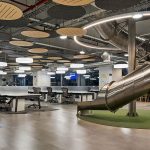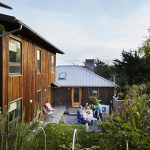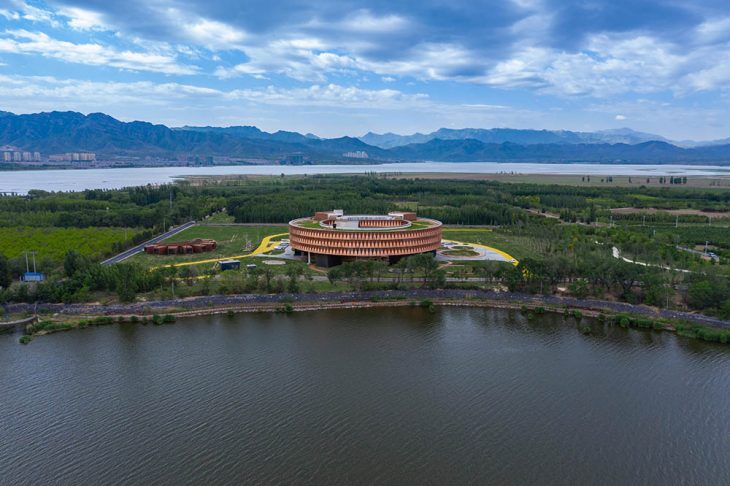
We talked with Tenio Architecture and Engineering about their new project in In Huailai, the wetland museum. Located in the largest wetland near Beijing, which is the home for 40 species of resident birds and a pathway of 151 species of migratory birds, the museum disseminates wetland knowledge to tourists, especially teenagers, and educates and trains popular science enthusiasts with the help of forestry administrations. Discover more after the jump.
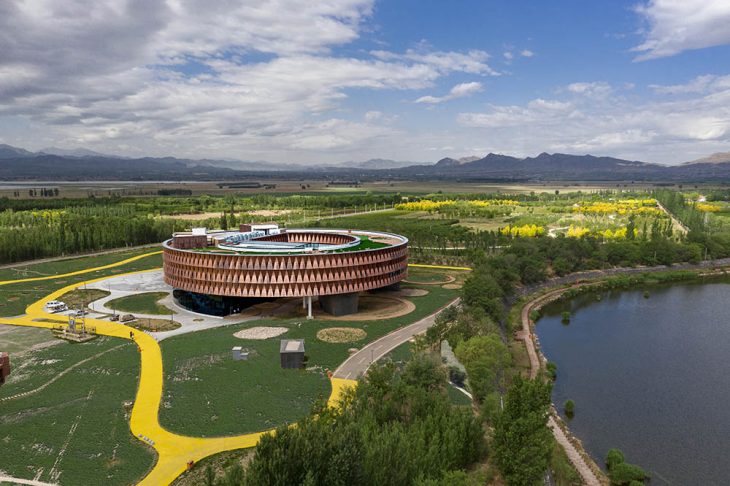
What was your main inspiration behind the project?
The building corresponds to the huge scale of the environment with the overall floating horizontal form, and the sense of rhythm of the copper skin corresponds to the texture of the green forest on the site.
What were the main challenges designing a project in such a vulnerable environment?
The way to achieve the goal is to firstly use the annular floating strategy that elevates the building over the wetland, and then utilize low-energy building design, self-cycling equipment and assembled construction.
The vulnerability of the environment in wetlands requires minimization of the output of buildings to nature. Starting from design, the museum realizes full cycling of materials, energy and water system.
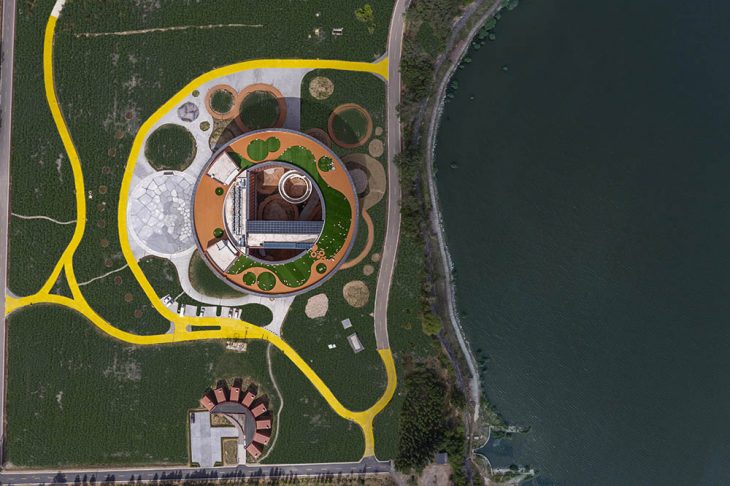
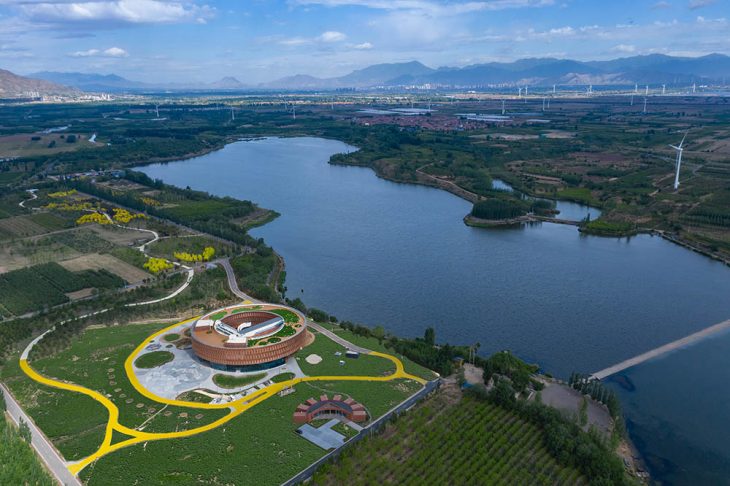
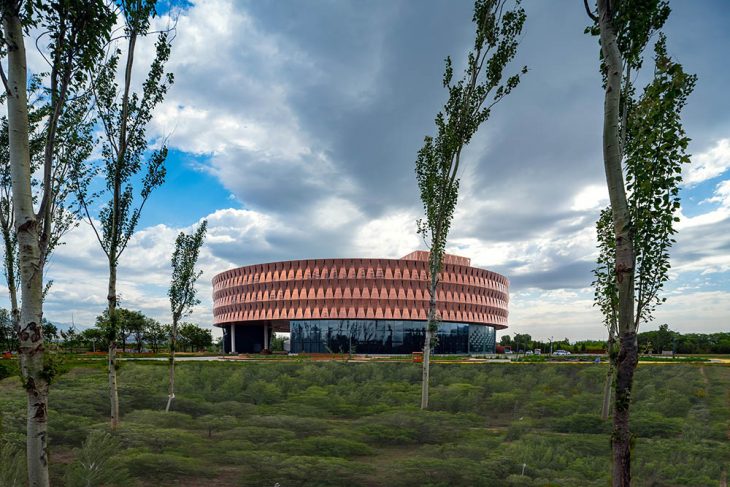
An intervention like this is usually a huge disruption to the existing surrounding. How did you manage to integrate the building into the environment? And how has the location influenced your design?
The building uses an elevated structure over the site to reduce the occupation of wetland as much as possible, and restores natural wetland within the site. At the same time, the wetland landscape is compensated on the roof of the building, so that the net loss of wetland is zero.
Antibacterial copper plate is selected for the building skin, and this material will be gradually oxidized from golden yellow to copper green and integrated with the environment. The gap between the skin and the building and the exterior suspended ceiling will become the birds’ nests. Based on to research results, the pattern of glass curtain wall is designed with 100x50mm grids that is sensitive to bird vision to prevent birds from hitting by mistake.
What are the main sustainability practices used while creating this project? Also what role does sustainability play in the future life of this project?
From the perspective of carbon sink, the building reduces land occupation as much as possible. The elevated building returns the natural space to the wetland. The enclosed outdoor courtyard is connected with the natural site through the elevated layer. The outdoor environment keeps the natural ecology of the wetland as well as the tall pagoda trees and Chinese pine forests around the building.
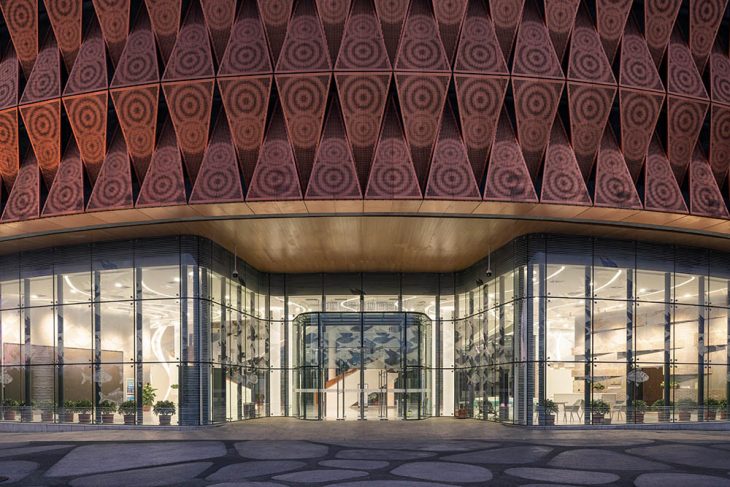
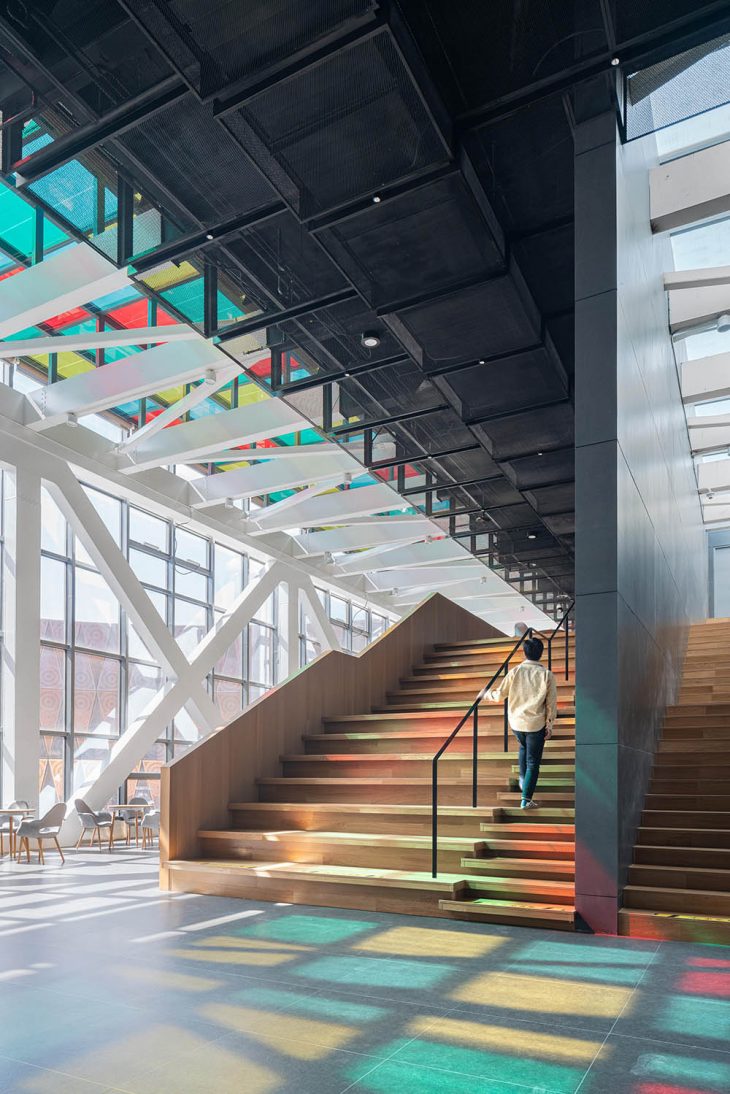
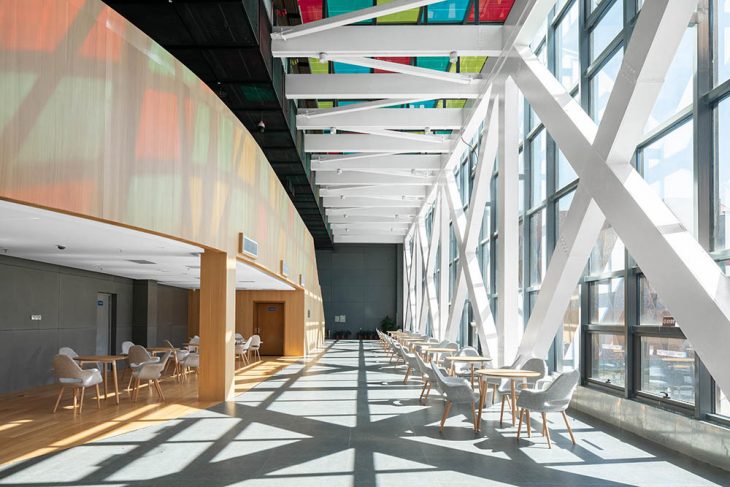
Have you had any special instructions concerning structural features or amenities?
Antibacterial copper plate is selected for the building skin, and this material will be gradually oxidized from golden yellow to copper green and integrated with the environment. The gap between the skin and the building and the exterior suspended ceiling will become the birds’ nests. Based on to research results, the pattern of glass curtain wall is designed with 100x50mm grids that is sensitive to bird vision to prevent birds from hitting by mistake.
How does the building work spatially?
Starting from design, the museum realizes full cycling of materials, energy and water system. The building uses the prefabricated steel structure, and realizes material cycling in whole life cycle, from factory manufacturing to on-site installation and removal. It utilizes solar energy and air energy to realize energy cycling.
RELATED: FIND MORE IMPRESSIVE PROJECTS FROM CHINA
Is the museum intended to accommodate many people, or is it to be more intimate?
The museum disseminates wetland knowledge to tourists, especially teenagers, and educates and trains popular science enthusiasts with the help of forestry administrations.
In the public space, the museum has designed a large circular enclosed space for visitors to enter, while in each themed exhibition space, more private Spaces are designed to show the unique educational theme of the space.
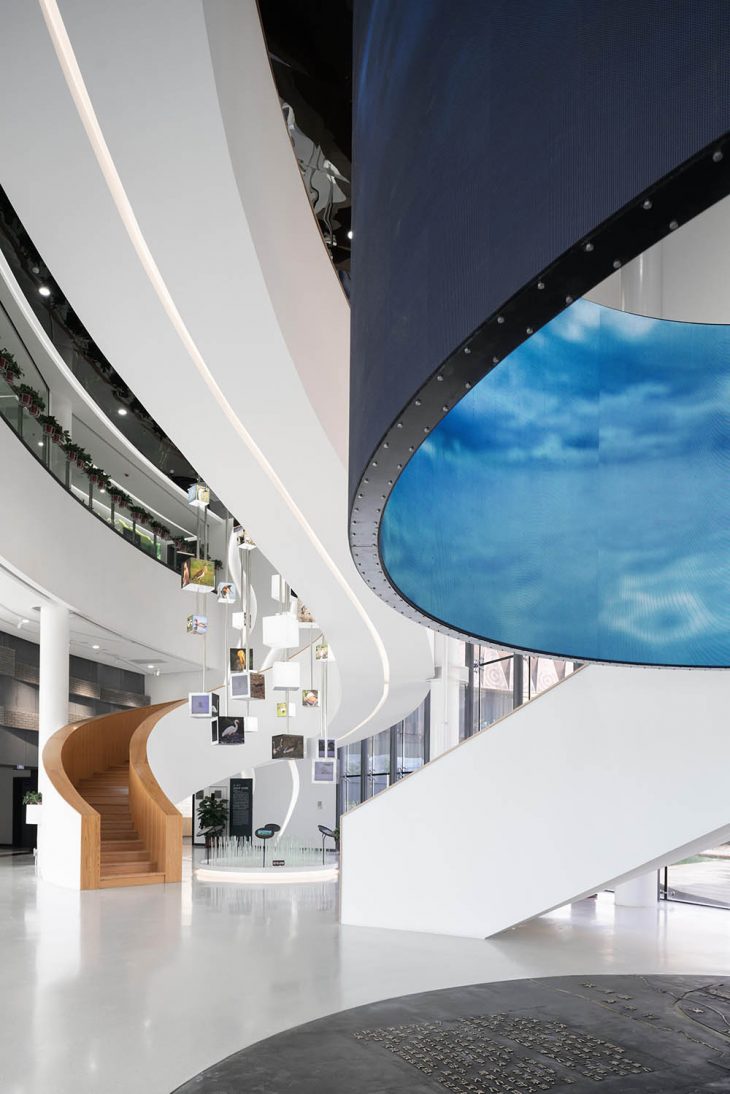
Open spaces and landscapes seem to play a huge role in the project. Could you tell us more about it?
Considering the landscape environment of the wetland park, the building is arranged on the site in the form of a floating ring. The space and form take into account the common attention to people and creatures. The courtyard connected with the nature and the elevated space allow birds, small animals and people to enter the semi-enclosed site in 24 hours, achieving symbiosis of the building and the environment.
What is the relationship between indoor and outdoor Spaces in the project?
The public space of the building forms a dramatic building space with the help of natural lighting, colored photovoltaic corridor and special-shaped main stairs. The exhibition hall has vision contact with the natural landscape, making the vast landscape of the wetland park the most spectacular exhibit of the museum.
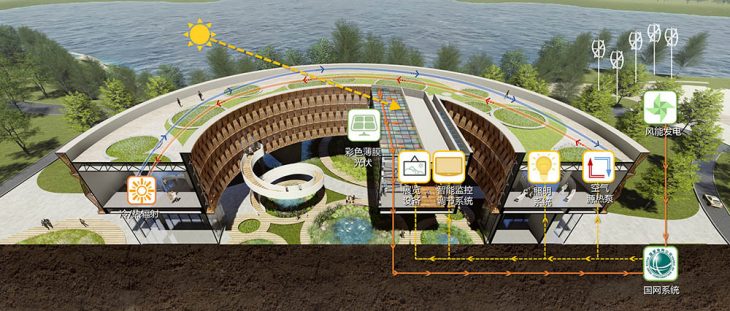
What is your ultimate goal when it comes to your work?
The overall goal of the project is to achieve a building that minimizes disturbance to the wetland and integrated into the nature, and includes three main goals respectively micro impact, zero emission and full cycling.
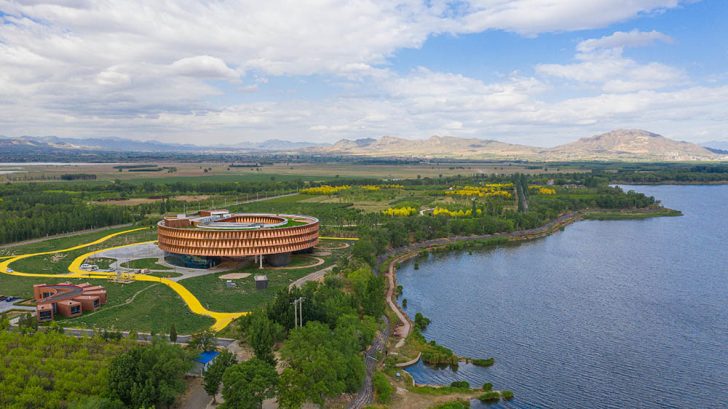
Project name?Wetland Museum In Huailai
Gross Built Area?8446?
Project address?Zhangjiakou? China
ArchitecturalDesign?Tenio Architecture and Engineering Co.,Ltd. – www.tenio.com
Architect?Ren Jun, Jiang Nan, Fu Yingjun, Guo Runbo, Chen Ran, Di Yang
Structure: Wang Zhiyong, Meng Lesa
Equipment Engineer: Liu Bing, Chen Jian, Yang Hui
Construction unit: Huailai Forestry Bureau
Construction unit: MCC Tiangong Group Co., Ltd
Construction drawing design:Tenio Architecture and Engineering Co.,Ltd.,BCCI
Landscape design: Tianjin HuafangZhujing Environment Landscape Design Co.,Ltd.
Curtain wall design: GasunConstructionGroup
Exhibition Design: Shanghai Fengyuzhu Culture Technology Co.,Ltd.
Copper curtain wall: Shanghai Huayuan New Composite Materials Co.,Ltd.
Park planning: Chinese Institute of Urban Scientific Planning and Design
Completion date: October 1, 2019
Project photography: AWESOME-ZHOU XINRAN


